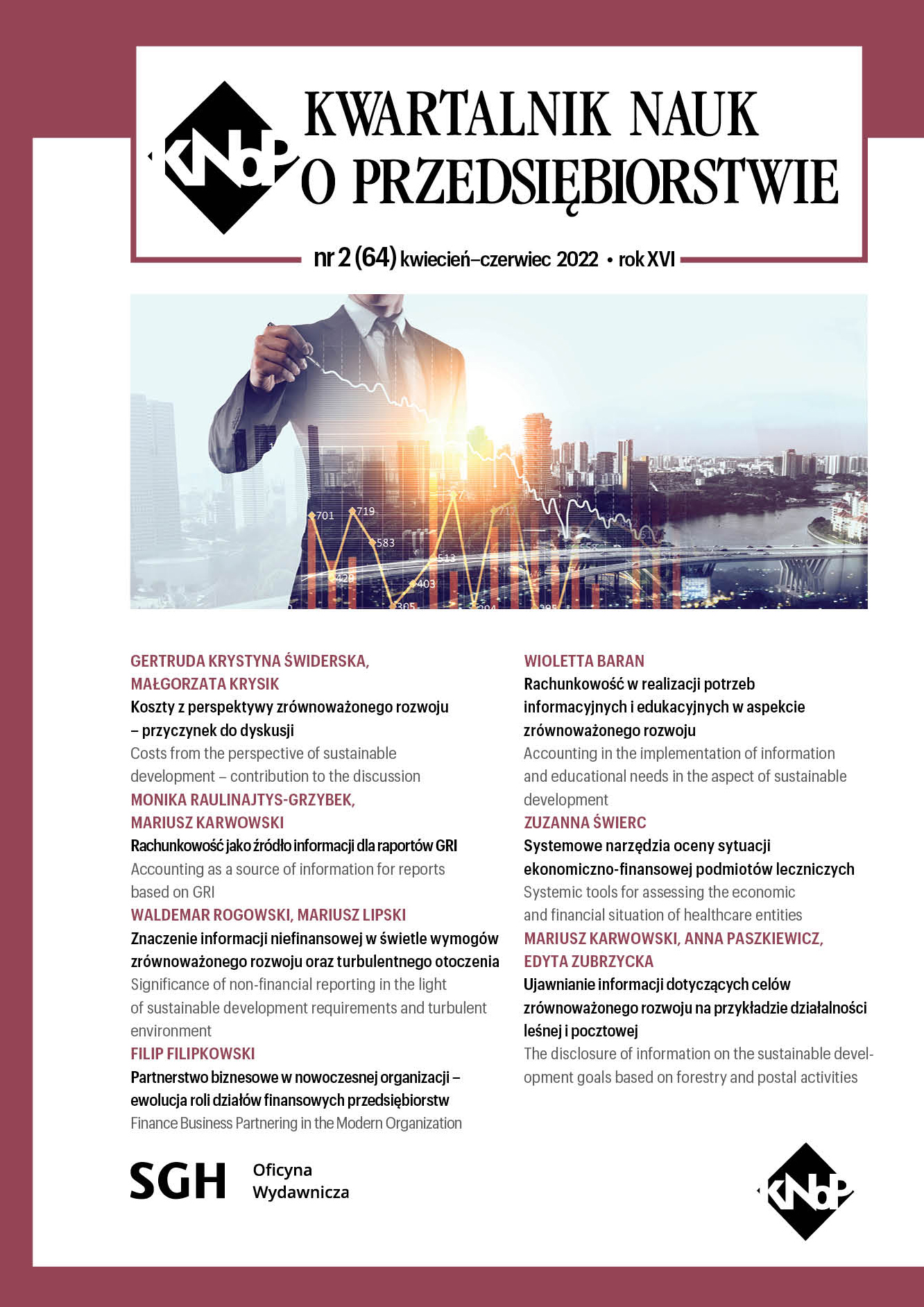Systemic tools for assessing the economic and financial situation of healthcare entities
Main Article Content
Abstract
The health care system is one of the most important areas of the state’s functioning, its main task is to organize citizens’ access to free guaranteed medical care. Medical activity is subject to specific regulations, which define the formal, technical and resource conditions of its conduct, and the financing of health care services is regulated – systemic institutions are responsible for their valuation and setting tariffs Ensuring the stability of the system requires monitoring its effectiveness. One of the elements of the system should be an objective and systematic assessment of the economic and financial condition of service providers, determining the continuity and availability of services. The aim of this article is to assess the tools used in the health care system to control the economic and financial situation of medical entities in the context of their usefulness. The measures of assessing the financial condition of these entities, specified in the applicable legal regulations, were analyzed in terms of various forms of medical activity and the terms of financing services. The obtained conclusions from the critical analysis should be used to verify system solutions in this area.
Downloads
Article Details
The author of the article declares that the submitted article does not infringe the copyrights of third parties. The author agrees to subject the article to the review procedure and to make editorial changes. The author transfers, free of charge, to SGH Publishing House the author's economic rights to the work in the fields of exploitation listed in the Article 50 of the Act of 4 February 1994 on Copyright and Related Rights – provided that the work has been accepted for publication and published.
SGH Publishing House holds economic copyrights to all content of the journal. Placing the text of the article in a repository, on the author's home page or on any other page is allowed as long as it does not involve obtaining economic benefits, and the text will be provided with source information (including the title, year, number and internet address of the journal).
References
Atkin B., Brooks A. (2015), Total Facility Management, 4th ed., Wiley Blackwell.
Baran W. (2017), System informacyjny rachunkowości zarządczej w samodzielnym publicznym zakładzie opieki zdrowotnej, Warszawa, Oficyna Wydawnicza SGH.
Błażyńska J. (2015), Użyteczność informacji finansowych sprawozdań finansowych. Poznań, Wydawnictwo Uniwersytetu Ekonomicznego w Poznaniu.
Dyktus J., Gaertner M., Malik B. (2017), Sprawozdawczość i analiza finansowa, Warszawa, Difin.
Griffin R. W. (2013), Podstawy zarządzania organizacjami, Warszawa PWN.
Hass-Symotiuk M. (red.) (2016), Sprawozdawczość podmiotów prowadzących działalność leczniczą, Warszawa, Wolters Kluwer.
Krzakiewicz K., Cyfert Sz. (2013), Teoretyczne problemy zarządzania organizacjami, Poznań, Wydawnictwo Uniwersytetu Ekonomicznego w Poznaniu.
Łyszczarz B. (2014), Ocena efektywności systemów opieki zdrowotnej w krajach OECD, Warszawa, Wolters Kluwer.
Sikora T., Kanecki K., Sikora A., Bogdan M. (2021), Kluczowe czynniki konkurencyjności podmiotów leczniczych, „Journal of Education, Health and Sport”, 11, s. 73–83.
Świderska G. K. (red.) (2010), Controlling kosztów i rachunkowość zarządcza, Warszawa, Difin.
Wierzbicki T. (red.) (1986), Informatyka w zarządzaniu, Warszawa, PWN.
Założenia koncepcyjne sporządzania i prezentacji sprawozdań finansowych, Rada Międzynarodowych Standardów Rachunkowości, 2001–2010.

